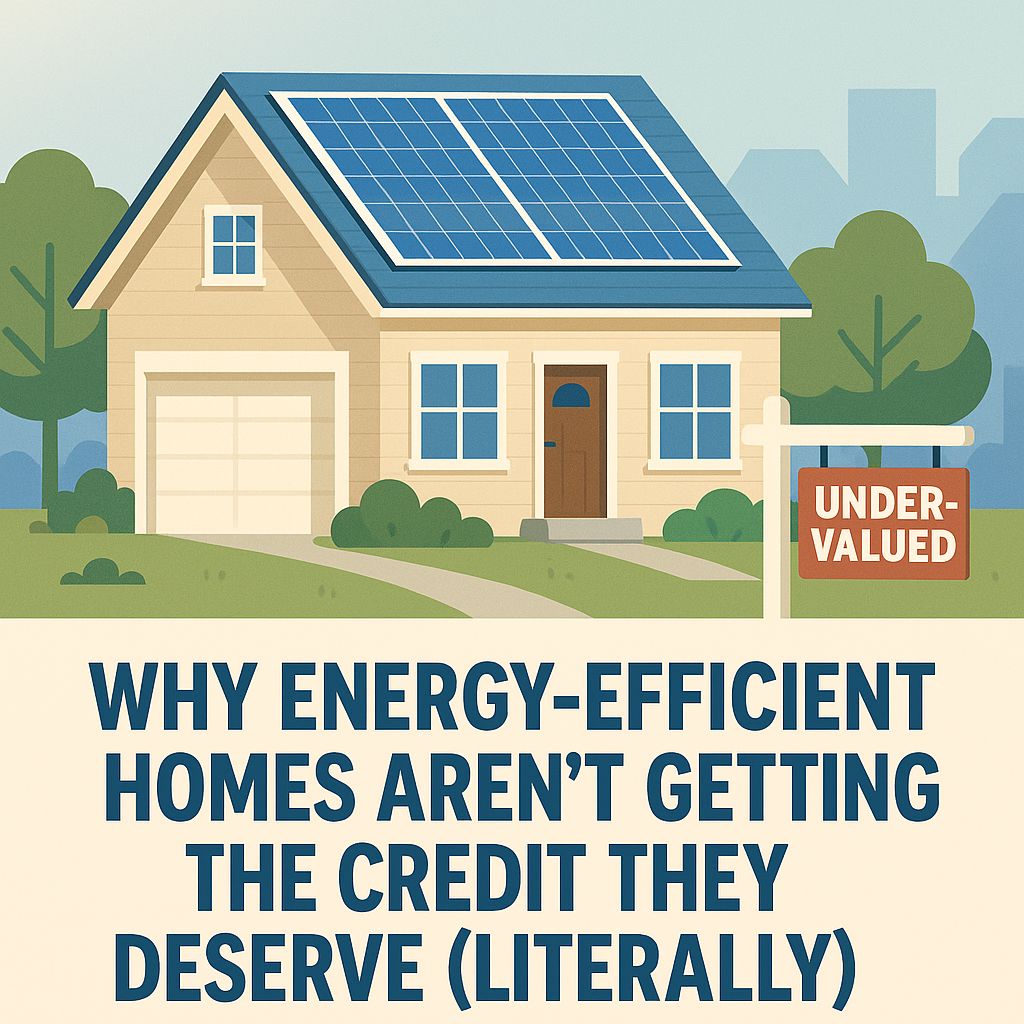
Why Energy-Efficient Homes Aren’t Getting the Credit They Deserve (Literally)
The market seems to be pushing for sustainability, but the system still hasn’t caught up. That disconnect is creating real issues for buyers, sellers, and agents.
According to the National Association of REALTORS® 2025 Residential Sustainability Report, nearly half of the agents surveyed said they’ve worked with a green-featured home in the past year. Yet, 73% aren’t even sure whether local appraisers know how to value those features properly. If solar panels, high-efficiency systems, or smart home upgrades don’t show up in the valuation, the seller doesn’t benefit and the buyer may not realize what they’re getting.
There’s a related problem hiding in the MLS. Forty-four percent of agents said their MLS includes green data fields, but nearly half of them never use those fields. Whether that’s due to lack of training or time, it’s a missed chance to show value beyond square footage and countertops.
And here’s the stat that caught my attention most. In 2025, 42% of agents said their clients rarely asked for advice on energy upgrades. Just last year, that number was 7%. That’s not a slow shift, that’s a swing. It suggests buyers aren’t seeing the connection between energy improvements and home value, or they’ve already decided their agent can’t help them make sense of it.
The solar conversation is another flashpoint. Forty-eight percent of agents said solar panels actually make a home harder to sell. Most of that ties back to confusion about ownership, loans, and what exactly transfers at closing. It’s not that solar is a bad feature. It’s that the deal gets messy if no one at the table is comfortable explaining it.
There’s no doubt that buyers still want efficiency. Two-thirds of agents said they’re most familiar with energy-efficient appliances. And the biggest motivator? Financial incentives. Forty-seven percent said tax credits and rebates are what move the needle most for buyers.
The takeaway here isn’t just that green features are gaining popularity. It’s that most of us still aren’t fully equipped to handle them. Not in valuation. Not in marketing. Not in how we guide clients through a deal. That gap is costing sellers, frustrating buyers, and putting agents in a tough spot.
If we want sustainable homes to be more than just a buzzword, we’ll need to close that knowledge gap. Otherwise, we’ll keep undervaluing properties that actually offer real, measurable benefits.
